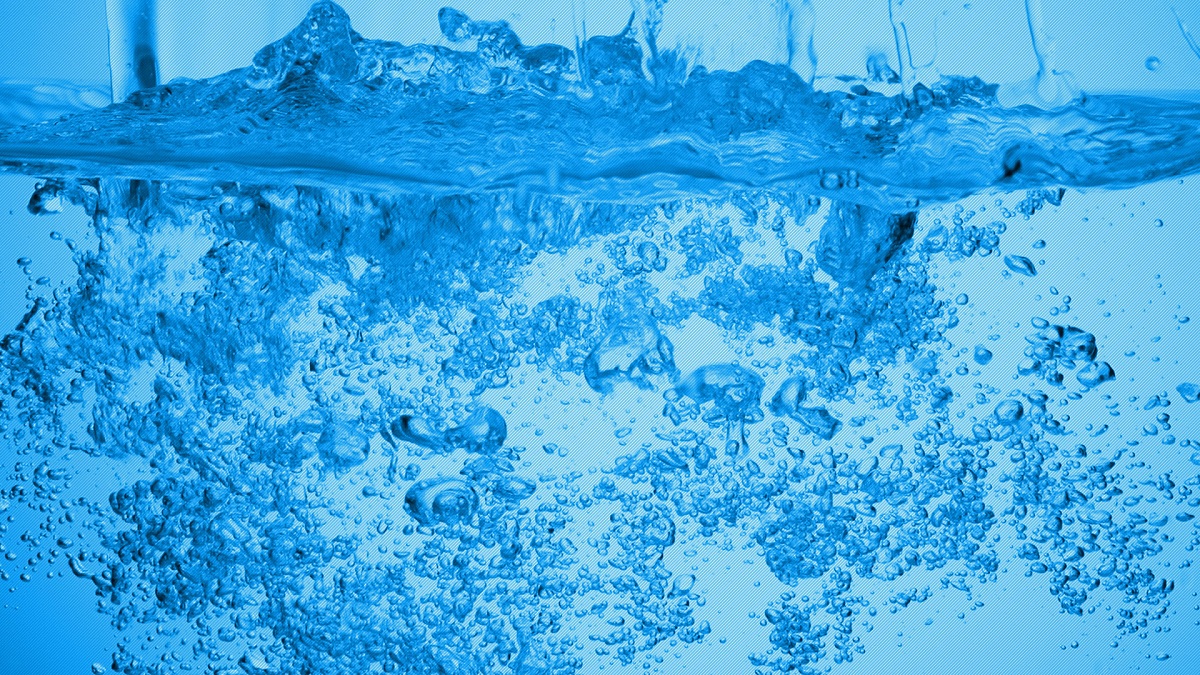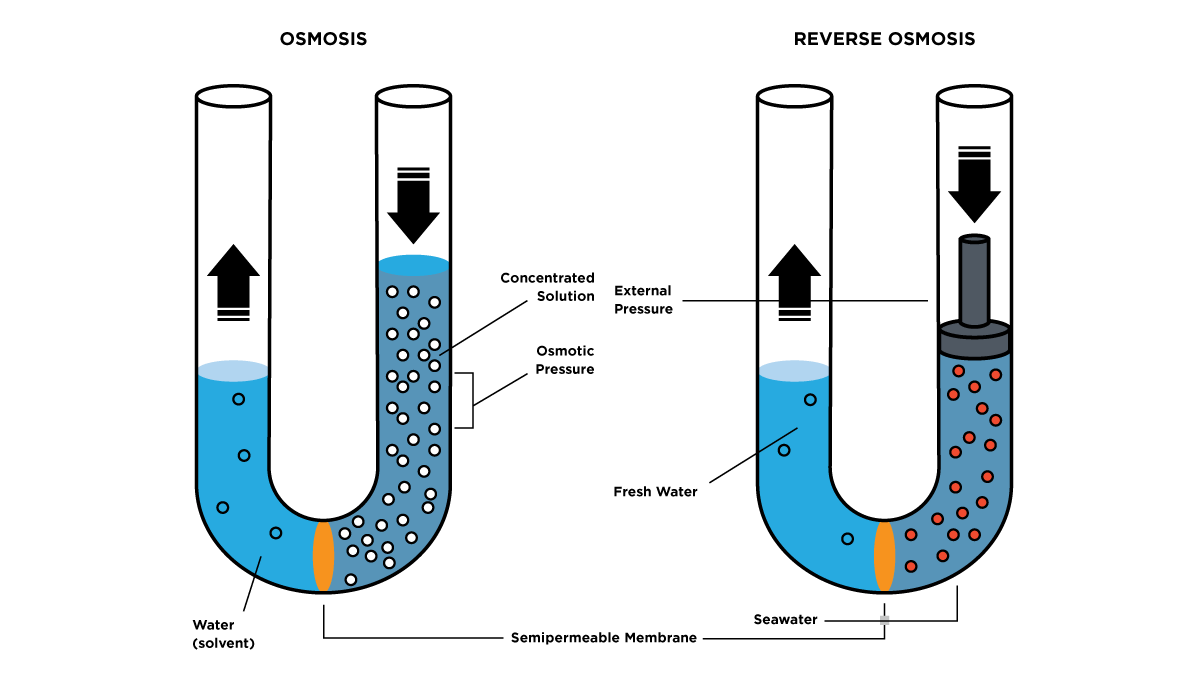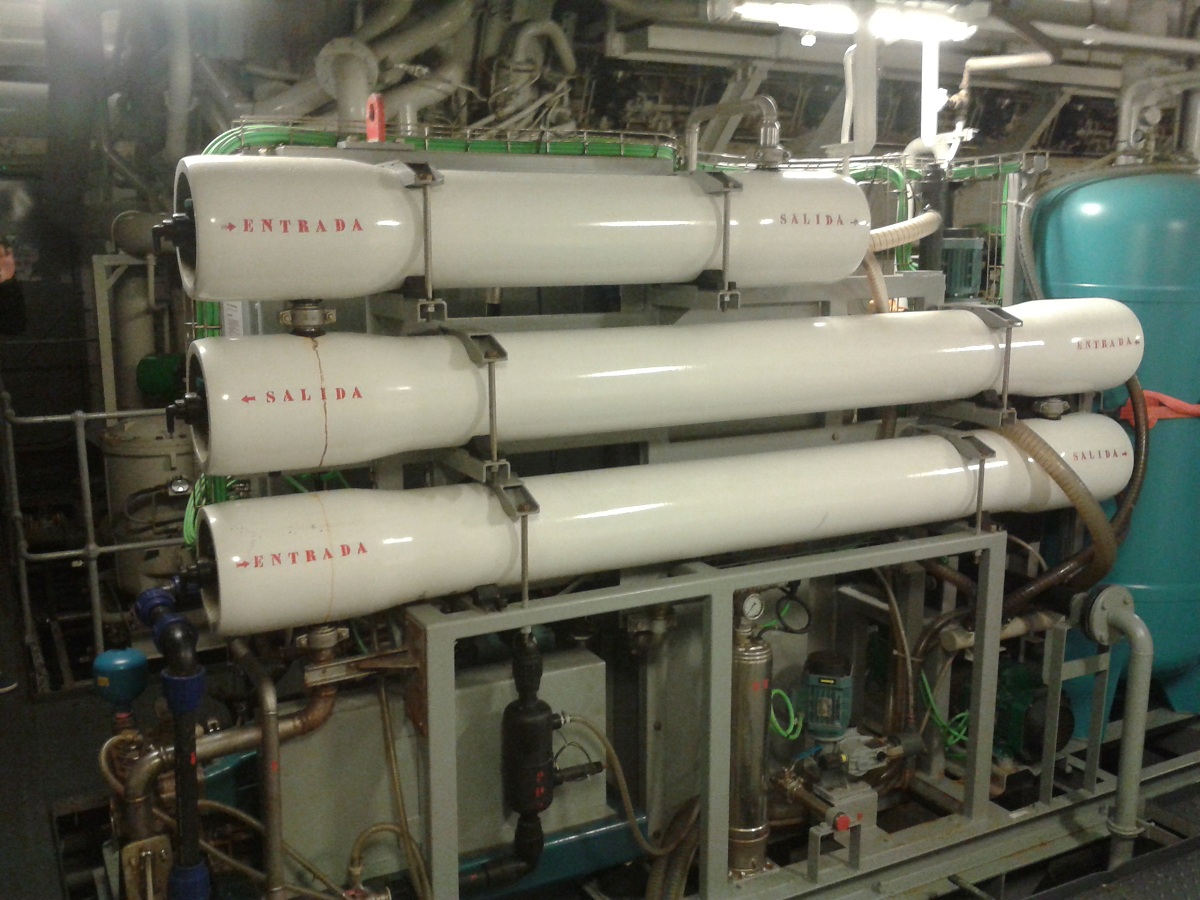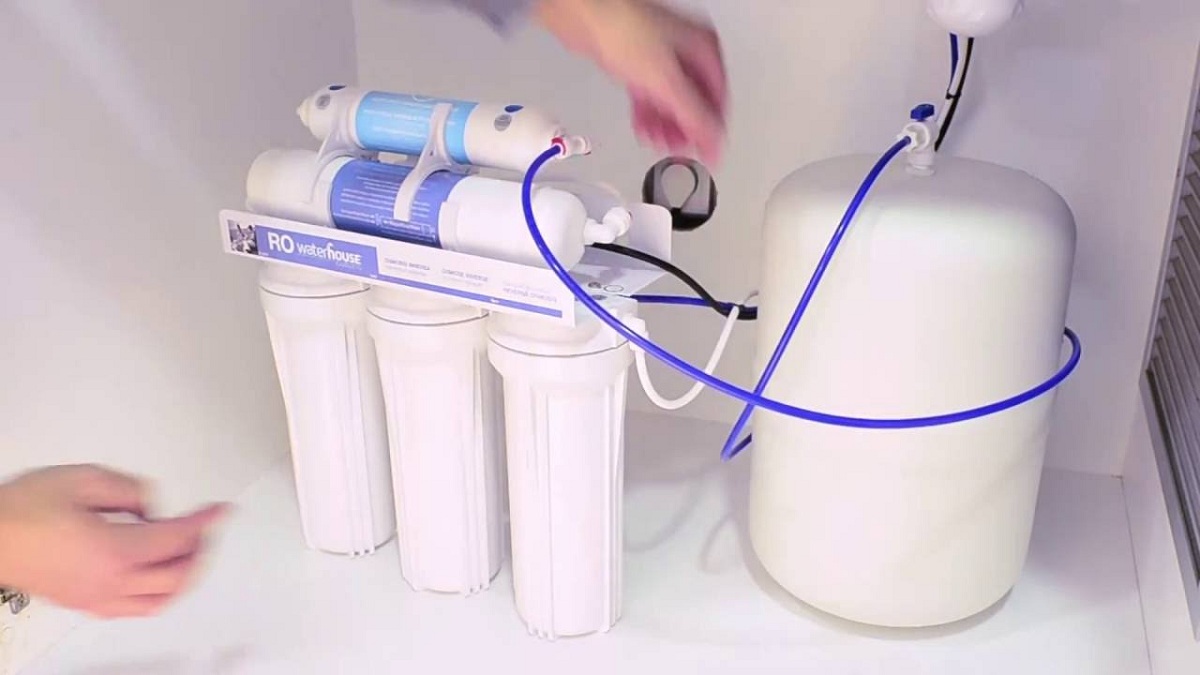
Surely you have ever heard of the osmosis and reverse osmosis. Natural or direct osmosis is what commonly occurs in nature. This is because cell membranes are semi-permeable. These cells that contain semipermeable membranes are found in most organisms. For example, we find them in the roots of plants, in cell membranes and in the organs of our body, among others. This osmosis has been used to desalinate the water to make it drinkable.
Therefore, we are going to dedicate this article to tell you everything you need to know about osmosis and reverse osmosis.
What is osmosis and reverse osmosis

When we have two solutions that have different concentration of salts and these two solutions are separated by a semi-permeable membrane, it occurs naturally, that a flow of water is produced from the solution that it has a higher concentration of salts than it has a lower concentration of salts. This flow will continue until the concentrations on both sides of the membrane equalize.
The human body is made up of a large proportion of water and this to the osmosis process occurs naturally. When we treat the salty waters of the sea to make it drinkable, we are interested in the opposite process. That is, we need that the flow of water that is established between the part with the lowest concentration to the one with the highest concentration looks the opposite. When we try to reverse this process The objective is to achieve a water flow with a higher concentration of salts from a lower concentration. To carry out reverse osmosis, sufficient pressure is needed on the water with the highest concentration and the membrane to be able to overcome this natural tendency.
Currently, reverse osmosis is one of the best methods to improve the characteristics of the water. The good thing about this process is that it helps to improve these characteristics through a physical system. The great advantage is that it is not necessary to use any type of chemical to improve the quality of the water. Thanks to this, we do not modify the initial characteristics of it.
Keep in mind that the human being has between 38 and 48 liters of water in the body. The vast majority of such water is found in cells. This water is fully recycled in a period of approximately 15 days. Thanks to this recycling of water, the transport of nutrients, oxygen to the cells and the elimination of other wastes can be based. Also, if you can regulate body temperature. Another fundamental aspect is that every day we ingest approximately an average of 2.2 liters of water, taking into account the water that is included in the food.
Reverse osmosis and water rejection

One of the main problems that arise when using reverse osmosis is the rejection of water. And it is that the reverse osmosis membranes have the characteristic of doing a continuous cleaning while you work. If they didn't clean while you were working, you would experience a build-up of contaminants and saturation in no time. These pollutants come from the other suspended and dissolved particles found in water. All this does what part of the incoming water flow carries contaminants and mineral salts. This situation is known as reject water. Usually the reject water reaches quantities of approximately 60% of the entire final product. The other 40% is considered as product water.
In some cases where high quality water devices and equipment are used, there may be a 50% ratio of product water to reject water. Reverse osmosis has a set life time depending on the quality of the membrane. And it is that a reverse osmosis membrane in a typical designed equipment can last between 3 to 5 years. Holding this membrane for much longer will cause performance to drop.
This makes it interesting and important to do periodic maintenance with chemicals to clean the membranes. Each type of equipment comes with its own specifications for membrane maintenance. There are also some waters that have high concentrations of dissolved solids. We also know them as hard waters or with a presence of silica that is higher than normal. In these cases, it is important to dose the antiscalant using a pump and carry out a treatment that is incorporated into the equipment. The treatment is based on the elimination of suspended particles by means of some cartridges with sediments or other equipment of the deep fact.
You can also use some activated carbon equipment and some softeners if it becomes necessary. With all these treatments, the amount of suspended solids in the water can be reduced for the best treatment of the membranes. There are some types of home use reverse osmosis and osmosis membranes. In these cases they have a somewhat shorter life span. Normally they are between 2 and 3 years since maintenance can not be carried out with chemical like the one we mentioned.
Home osmosis and reverse osmosis filters
Surely you have ever owned or heard of osmosis and reverse osmosis filters in homes. Most of the time it is used in those places where the hardness of water is older. Here you have to take into account some aspects. What makes tap water taste bad is the combination of hard water with the chlorine in the water. This chlorine is used to prevent bacteria from growing and the water from remaining disinfected. Osmosis and reverse osmosis devices eliminate these flavors as they have an activated carbon resin filter. However, this can be achieved with a filter jug.
To save you money on an osmosis and reverse osmosis filter just leave the water in a jug and wait a bit. Chlorine in water is removed naturally as it evaporates. If the water was then given to me by the refrigerator, you will practically notice a difference in taste of less hard water.
I hope that with this information you can learn more about osmosis and reverse osmosis
